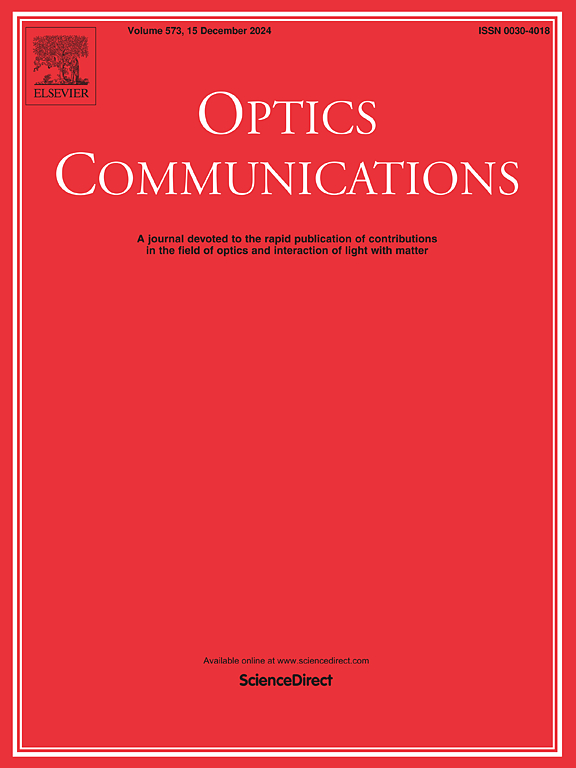Enhancement in power stratification efficiency of NOMA-MIMO-aided downlink indoor visible light communication networks
IF 2.2
3区 物理与天体物理
Q2 OPTICS
引用次数: 0
Abstract
Non-orthogonal multiple access (NOMA)-aided visible light communication (VLC) network is deemed a potential alternative for data access and offers superior spectral efficiency, primarily for indoor communication systems. Despite its apparent advantages, the NOMA technique suffers from residual interference in multi-user multiple-input multiple-output (MIMO)-based VLC networks when users attempt to reconstruct their signals from the superimposed received signal. To combat such difficulties, developing an optimal and adaptive power splitting algorithm is crucial. In this paper, a novel power stratification strategy termed as sigmoid gain ratio power allocation (SGRPA) is proposed to alleviate the power allocation constraints of MIMO-NOMA-based downlink VLC networks through sigmoid function transformation. A comparative study between conventional power allocation approaches for a MIMO-based VLC network is conducted in multi-user indoor environment. We also illustrate the impact of tuning the field of views (FoVs) of receivers and the transmission angles of light-emitting diodes (LEDs) to find the optimal position of the VLC access point (AP) and the user FoV. The proposed SGRPA scheme exhibits a significant data rate enhancement when compared to gain ratio power allocation (GRPA), normalized gain difference power allocation (NGDPA), and normalized logarithmic gain ratio power allocation (NLGRPA) methods with a multi-user scenario.
求助全文
约1分钟内获得全文
求助全文
来源期刊

Optics Communications
物理-光学
CiteScore
5.10
自引率
8.30%
发文量
681
审稿时长
38 days
期刊介绍:
Optics Communications invites original and timely contributions containing new results in various fields of optics and photonics. The journal considers theoretical and experimental research in areas ranging from the fundamental properties of light to technological applications. Topics covered include classical and quantum optics, optical physics and light-matter interactions, lasers, imaging, guided-wave optics and optical information processing. Manuscripts should offer clear evidence of novelty and significance. Papers concentrating on mathematical and computational issues, with limited connection to optics, are not suitable for publication in the Journal. Similarly, small technical advances, or papers concerned only with engineering applications or issues of materials science fall outside the journal scope.
 求助内容:
求助内容: 应助结果提醒方式:
应助结果提醒方式:


